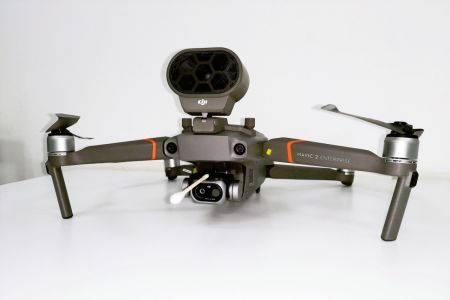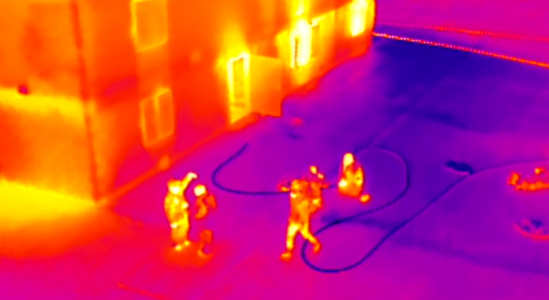WHY THIS MATTERS IN BRIEF
A shortage of Covid-19 testing kits and the need to try to identify people infected with the virus to stop it spreading means governments are now turning to drones for help.
 Interested in the Exponential Future? Connect, download a free E-Book, watch a keynote, or browse my blog.
Interested in the Exponential Future? Connect, download a free E-Book, watch a keynote, or browse my blog.
As 3D printers help fix respirators, AI’s and supercomputers hunt for Covid-19 vaccines, autonomous vehicles disinfect streets and subways, drones patrol the open streets looking for people breaking curfews, and as robots staff increasingly autonomous hospitals looking after Covid-19 patients, now drone company DJI might have just found the most low tech solution to the problem of figuring out if someone has the coronavirus or not by involving some of its most high tech drones.
So far coronavirus epidemic prevention units in China have been using thermal imaging drones to remotely check residents’ temperatures, so DJI, one of the world’s largest commercial drone manufacturer’s took steps to improve the precision of its own measurements taken using the thermal camera on the Mavic 2 Enterprise drone so they too could join the good fight, and their tool? A humble cotton swab.
The high tech drone with the low tech solution. Courtesy: DJI
DJI’s engineers found that sticking a cotton swab on their drones improves the accuracy of measuring a person’s temperature by acting as a reference for calibrating the drone’s thermal imaging camera which can then be used to fly over people who are outdoors and peer into people’s windows who are in self isolation to check whether or not they have a fever. Whereas the drone’s accuracy could have previously been off by as much as 4˚ to 5˚ Celcius (7.2˚ to 9˚ Fahrenheit) the addition of the swab reduces the margin of error to just 0.5˚ Celsius (0.9˚ Fahrenheit) under standard conditions, the company said.
The Mavic 2 Enterprise drone is equipped with a FLIR Lepton thermal micro-camera, but it was created for industrial use, meaning it wasn’t made to measure body temperature, so the cotton swab turned out to be the key to improving the camera’s accuracy, although obviously, officially, DJI still doesn’t recommend using its drones for coronavirus testing.
DJI said the cotton swab is “an emergency solution created by their engineering team in three days,” adding that they “still recommend using professional medical equipment,” but it’s also trying to find new ways for their tech to fight the spread of the deadly Covid-19 disease.
“When the drone finds someone who is feverish, the temperature abnormality is displayed through the UAV remote control screen,” said Zhang Xiaonan, head of DJI Enterprise, and so far DJI’s drones have been used for remote temperature detection in many communities and at road checkpoints.
But that’s not the only way drones are proving useful in the battle against the coronavirus. UAVs have also been used for spraying disinfectant over roads, helping with the construction of Wuhan’s temporary coronavirus hospitals and dispersing public gatherings – including using a mounted megaphone to scold people for not wearing masks.

















